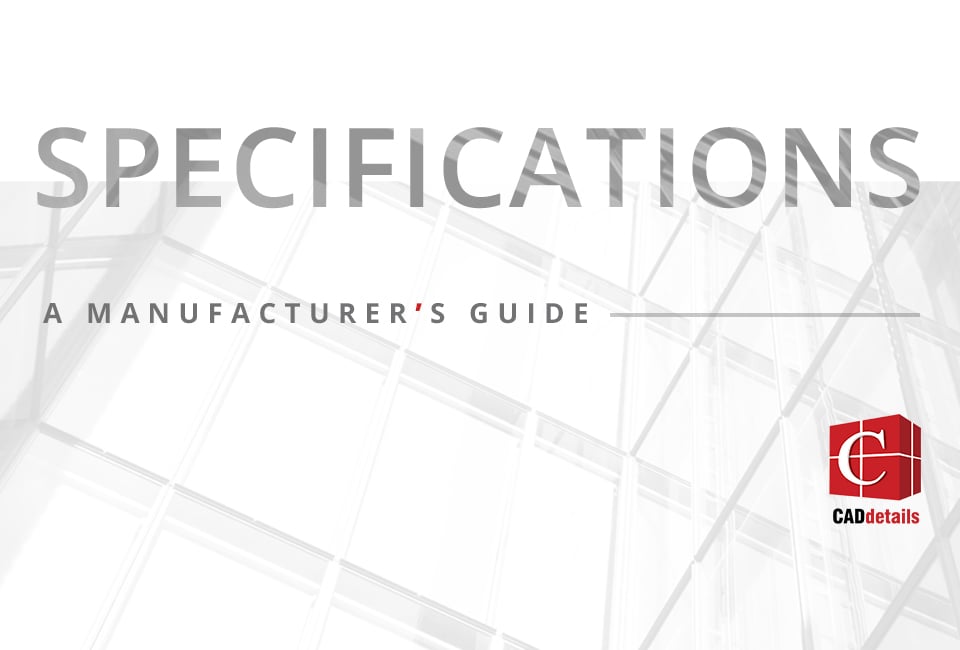Properly written specifications are integral to every construction project. Specifications are instructions from the design team to the construction team, and their purpose is to communicate the design intent of the project. Specifications describe the end work result, rather than the way to achieve the work result. Building product manufacturers often have specification sections created for their products. These are typically referred to as guide specification sections.
Manufacturer guide specifications can include all options for a product or product line within the specification section. These are written in such a way as to clearly lay out the options and selection decisions that need to be made. Products and options that are not chosen can be deleted. Ideally, specifications are written according to Construction Specification Institute’s (CSI) and Construction Specification Canada’s (CSC) standards. The specification section is categorized by MasterFormat® categories. MasterFormat® sections for a construction project are assembled into a Project Manual in the order determined by the MasterFormat® categories. Care must be taken to ensure specifications are written according to the guidelines of the CSI and CSC.
Given the work involved in creating proper specifications, manufacturers need to consider if they need 3-Part guide specifications for their products. Below are some benefits manufacturers of building products can realize by making 3-Part guide specifications available.
1 - Ease of Incorporating Your Products Into a Project Manual
A Project Manual is written for a construction project. Most manufacturers have some information available that can be provided as submittals such as product data sheets, cut sheets, brochures, standards testing, shop drawings, photographs, assurances of performance, and more. By providing 3-Part guide specifications to designers, the burden of incorporating your products is lessened. The work needed to be done to provide the information in the appropriate SectionFormat™ structure has largely been done by the manufacturer.
2 - The Chance of Being Added to a Design Firm’s Office Master Specifications
Architectural firms do not create their specifications from scratch. They typically work from Office Master Specifications that serve as templates for all of their Project Manuals. If your products can be included in Office Master Specifications, you stand a good chance of having your products included in many of their projects. Having well written 3-Part guide specifications makes it easier for firms to add you to their Office Master Specifications.
3 - Communicating in a Familiar Format
Further to the first point above, in addition to making it easier to specify your products, manufacturer’s 3-Part guide specifications communicate the work result in a familiar format, using standard terminology, and organized as the designers need for their project specifications. Providing 3-Part guide specifications shows a manufacturer is meeting the needs of the design community and providing the background information designers need to make product decisions.
4 - Competitive Advantage
Manufacturers that do not have up to date CSI 3-Part guide specifications may find themselves at a disadvantage when it comes to being specified. This is particularly true when direct competitors do offer CSI 3-Part guide specifications.
5 - Meet Industry Demand
Many manufacturers receive requests for specification documents from the design community. Providing 3-Part guide specifications allows manufacturers to meet the demands and expectations of architects, engineers, designers, and specifiers.
6 - Guide Specifications Assist Your Product Representatives
As discussed by Nina M. Giglio in The Construction Specifier, guide specifications can open doors for manufacturer product representatives. However a poorly prepared specification can reduce the chance that a manufacturer is selected for a project. Specification writers need an understanding of construction methods and materials, experience, and understanding of the formats required. Guide specifications are an essential sales tool in the construction document toolkit for manufacturers.
Please visit our specification page for manufacturers to learn more, and book a meeting with us if you would like to discuss having specifications written for your products.


